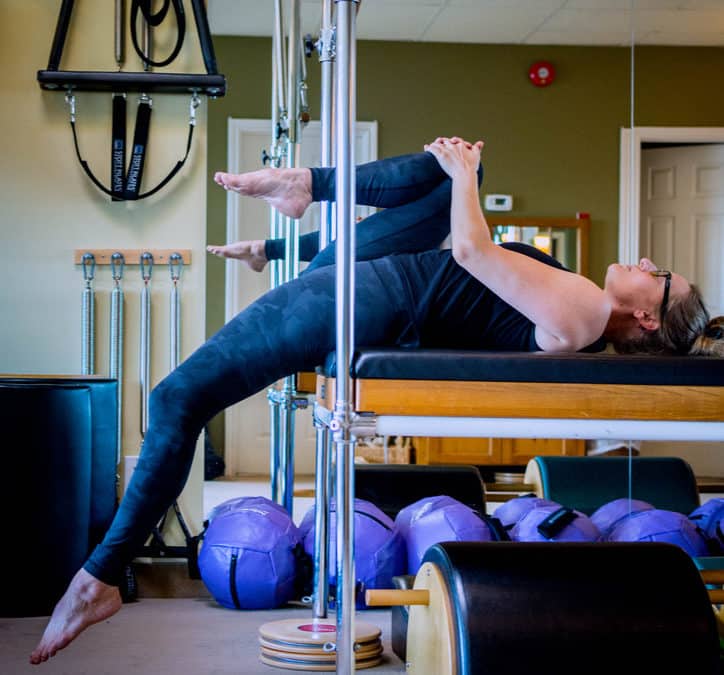There’s been some interesting debates regarding stretching in recent years as multiple studies have indicated negative effects from stretching regimes including a loss of strength and a greater chance of injury.
If you’re already annoyed at the idea that even stretching might be bad for you – join the club. Is everything virtuous eventually proven to be bad? It can seem so. Stretching can be wonderfully relaxing as it has a calming effect on the nervous system and it can clearly improve mobility and posture. So what’s at issue?
Stretching itself is not inherently bad for us.
The issue is that certain types of stretching can work against our goals and we may have to adjust our stretching plan to gain any benefits. The first step is to clarify the goals. Are you stretching simply to improve flexibility or are you hoping that gains in mobility will lessen your chance of injury when you hike or play golf? Are you hoping that it lessens soreness after a workout? Research indicates that what type of stretching and when it’s performed matters.
Static Stretching vs. Dynamic Stretching
In a static stretch the targeted area is not active. For example, place your foot on a chair with a straight leg and reach to your toes. The hamstrings at the back of the leg being held in a stretch are relaxed. The calf stretch where the heel is hanging off a stair is another common example. These passive stretches are usually held for a minimum of 30 seconds.
In dynamic stretching the muscle group stretched is actively working as it moves through a range of motion. The end range is held for a few seconds at most. Side Splits with Cross Touch is a clear Pilates examples of this.
Risks vs. Benefits
In most studies static stretching resulted in less power and speed in the targeted muscles. This was mostly shown in the lower body muscles of athletes. Immediately following static stretching running times were slower and jump heights were lower as muscles were less reactive. This strength deficit only presented in stretches held longer than 60 seconds. It is unclear how long this temporary loss of strength lasts. Some studies show 30 minutes, others longer.
Dynamic stretching showed the same gains in flexibility as the static stretches without the loss of strength making it a better warm up choice.
Some studies suggest that static stretching might be more effective in achieving the dramatic levels of flexibility necessary for activities such as martial arts, gymnastics and dance.
Hyper Mobility & Stretching
I don’t have a sports background so I always filter research through my own personal experience which is dance. When I watch ballet dancers warm up, they primarily hang out in long sustained static stretches such as the splits or frog position even though they’re already hyper mobile. Australian Ballet physiotherapists did very interesting stretch studies. They assessed calf strength on all of their dancers and found calf strength in terms of endurance, to be deficient. By banning sustained calf stretches and focusing on controlled strengthening they achieved a huge decrease in lower leg injuries. (if you’ve watched a dancer on pointe it’s hard to believe any weakness exists!).
This also points to what we see in the Pilates studio all the time. We notice that bodies with areas of hyper mobility frequently respond better to strengthening than to stretching. I’ve written about hypertonicity in a previous blog and it is relevant here. Muscles that are in spasm and constantly in protective mode respond negatively to end range stretching.
Summary
- When using stretching as warm up for an activity that requires power, dynamic rather than static stretching is likely your best choice.
- Aiming to dramatically improve flexibility? It is probably good to combine both but limit the static stretches to post activity.
- If an area is repeatedly sore or prone to injury avoid end range stretches and static stretches and try light strengthening instead.
- If your body responds well to static stretching limit it to 40 second holds prior to activity.
- Do you enjoy a class that uses static stretching as a warm up? Limit your range of motion so that you’re not stretching at the end range.
- It is not shown that stretching as a warm down reduces muscles soreness. Do it if it’s enjoyable but don’t feel guilty if you skip it.
As always pay attention and learn what is most effective for your body.
Uncertain of the difference? Click here to view my short clip of of a dynamic stretch warm up.
Thanks for reading.
Laura Helsel Gauthier
Director, Pilates Process

